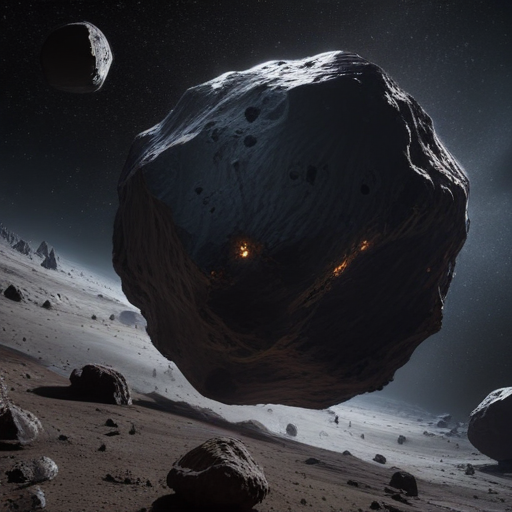Astronomers are currently monitoring an asteroid designated 2024 YR4, which has the potential to collide with Earth in 2032. Measuring approximately the size of a football field, the likelihood of a significant impact has been estimated at 2.1%—or about 1 in 47. However, researchers are optimistic that as they refine the asteroid’s orbital calculations, this risk is likely to diminish significantly, potentially down to zero.
Near-Earth Objects (NEOs) like 2024 YR4 are remnants from the early solar system, formed around 4.6 billion years ago. While most NEOs are not a concern, larger ones could cause serious localized damage if they were to collide with Earth, similar to the Chelyabinsk meteor that injured many when it exploded over Russia in 2013.
Astronomers use a global network of large telescopes to identify and track these asteroids. They capture images of the night sky, searching for objects that move against the backdrop of stars. This is often done through wide-field telescopes, which can cover a large area while collecting data.
Once an object like 2024 YR4 is detected, quick follow-up observations are essential. Scientists analyze the asteroid’s brightness and movement to estimate its size, composition, and trajectory. Determining the distance often involves using optical and radio telescopes, with radar helping to pinpoint exact measurements when possible.
The scientific community remains vigilant, especially if an asteroid shows a significant risk of impacting Earth. If the chance of a collision exceeds 1%, it is reported to the International Asteroid Warning Network (IAWN) which focuses on assessing the threat and coordinating observational efforts. For 2024 YR4, early notifications have prompted astronomers to gather as much data as possible.
One of the challenges astronomers face is the inability to detect an approaching object when it comes from the sun’s direction, as was the case with the Chelyabinsk meteor. As the asteroid moves, astronomers will begin to narrow down its potential impact area.
Reflecting a hopeful note, space agencies including NASA have demonstrated the feasibility of asteroid diversion through missions like the Double Asteroid Redirection Test (DART), which successfully altered the orbit of a harmless asteroid in 2022. While extensive planning is crucial for any potential intercept mission, current reports suggest that the large-scale asteroids capable of global destruction are rare and well-tracked.
In summary, while the possibility of 2024 YR4 impacting Earth exists, astronomers are actively monitoring and assessing the situation. The ongoing studies and technology advancements offer reassurance that, should a real threat emerge, plans and methods are in place to address it effectively. Most importantly, for now, the asteroid poses no significant danger, and advances in near-Earth object detection are continuously growing.
